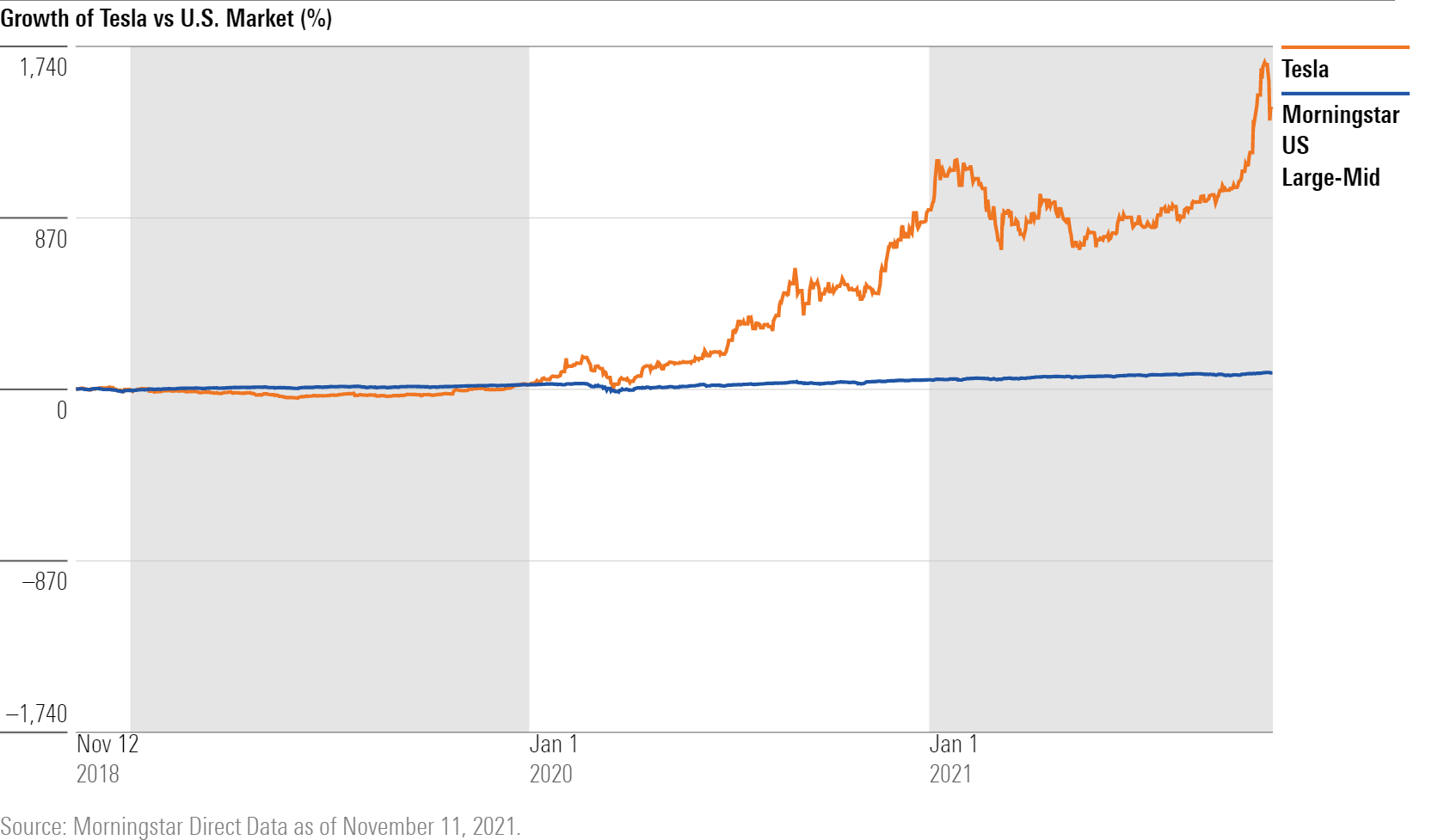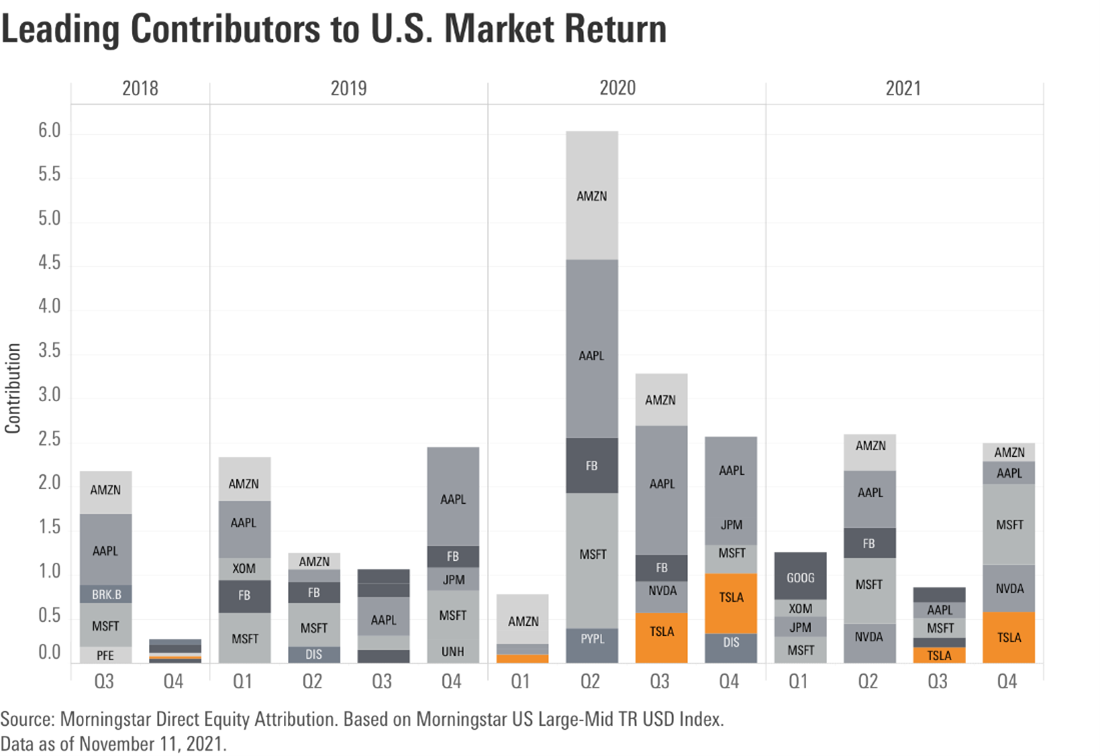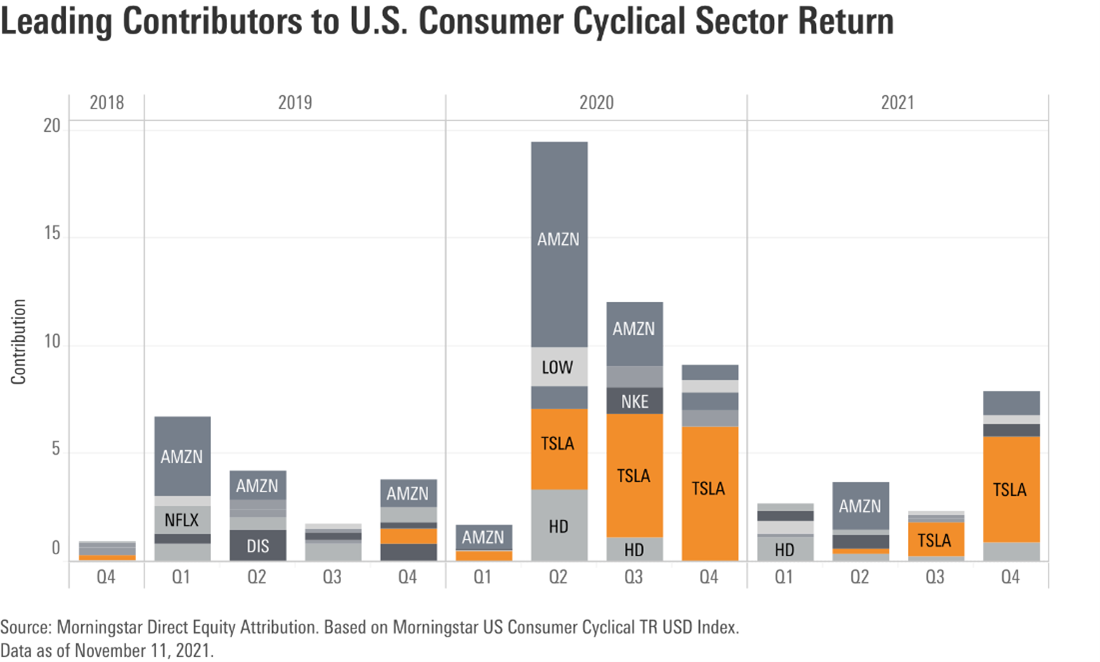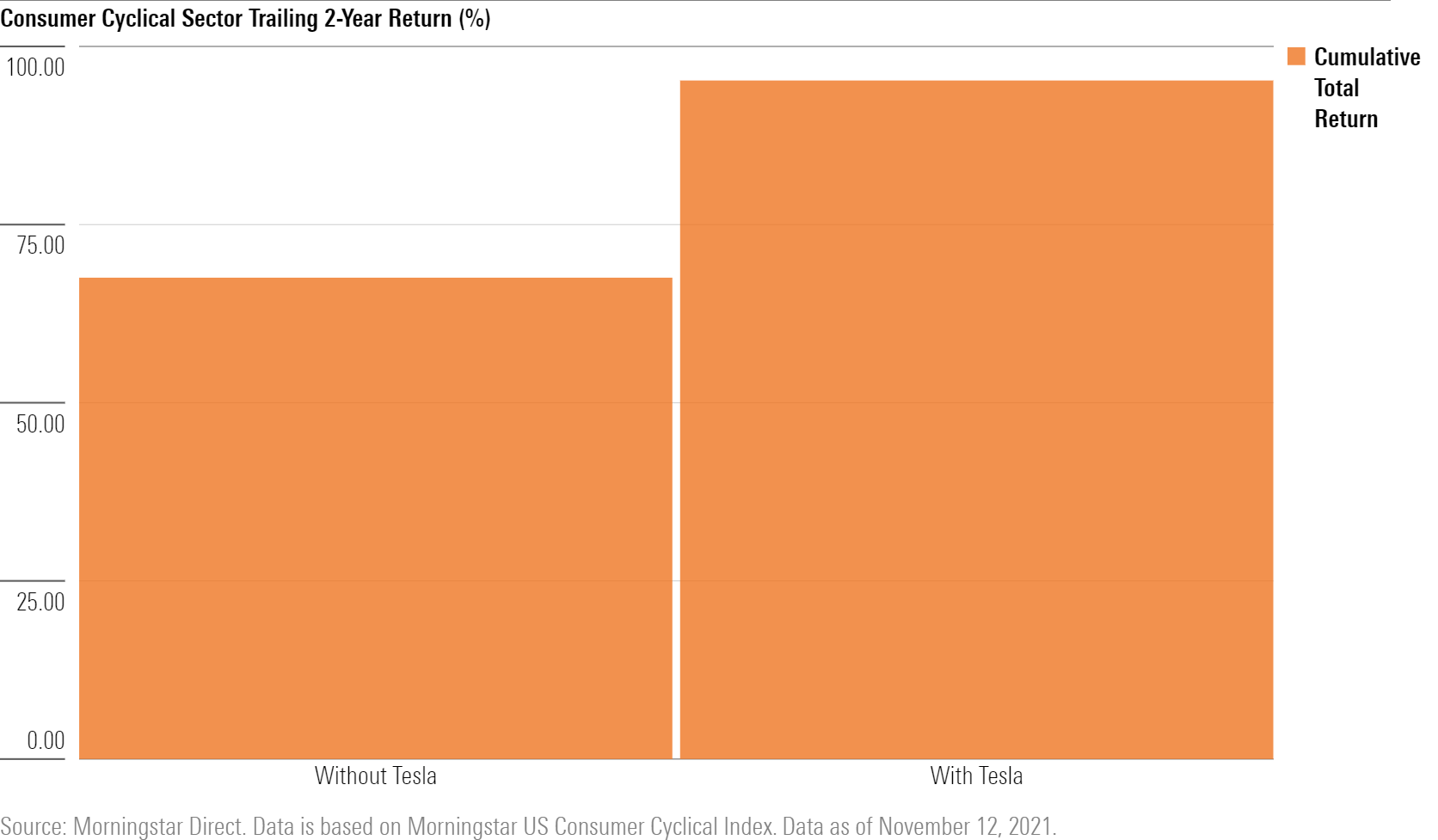Why Investors Can't Ignore Tesla
5 charts on Tesla's growing influence in the stock market.

Love it, hate it, or haven’t thought much about it, Tesla TSLA is now a stock that investors can’t ignore.
Over the past two years, Tesla’s market value has skyrocketed. The electric-vehicle manufacturer is now the fifth largest stock in the United States, up from $752 billion at the beginning of the year and $117 billion in January 2020, when it was the 64th largest stock. The 18-year-old company, which went public in 2010, now has a market value that exceeds Warren Buffett’s Berkshire Hathaway BRK.B, Johnson & Johnson JNJ, and Home Depot HD.
With such high market valuation comes a heavy weight in many of the indexes that track the U.S. stock market and, therefore, in most investors' mutual fund portfolios. So, when Tesla posts big moves, investors can feel it.
Take the day in late October when Tesla's market value surged after an announcement of a partnership with Hertz HTZ to build up its electric-vehicle fleet. That day, Tesla shares jumped 12%--contributing almost half that day's 0.49% rise in the Morningstar U.S. Large-Mid Index, according to Morningstar Direct. And the following week, Tesla shares fell 12% after Elon Musk tweeted about his decision to sell 10% of his stake in the company. That day, the market lost 0.3%. Tesla's move helped explain a 0.26 percentage point of that drop.
These numbers might seem small but can add up over time. Over the last two years, the Large-Mid Index, an index that essentially tracks 90% of the stock market, has risen 58.95%. But if Tesla’s performance is excluded, the index would be up 56.39%, according to Morningstar Direct.
This kind of impact comes as Tesla stock has once again rocketed higher after taking a pause in the early part of 2021. Shares are up 37.1% so far in the fourth quarter compared with gains of 8.0% for the broader market. Tesla has returned over 1,360% over the past three years, defying skeptics, sparking debate, and contributing to the investor frenzy around other electric-vehicle manufacturers.

As a result of this incredible run, Tesla currently comprises 2.08% of the Morningstar U.S. Large-Mid Index. It is far behind Apple AAPL (which carries a 5.42% weight in the index) and Microsoft MSFT (5.75%) and still has room to catch up with Google’s GOOG 3.97% weighting, but it is on par with Metaverse’s (formally Facebook) FB index weight of 1.78%.

Tesla’s strong performance has landed it among the top five contributors to return in five of the past eight quarters. Prior to the first quarter of 2020, Tesla had a minuscule impact on the broader market’s returns. But as the stock has rallied and was added to market indexes, its influence has grown.

Tesla's influence is even greater when you drill down into the market. The auto manufacturer falls into the consumer cyclical sector--which makes up just over 10% of the Morningstar U.S. Consumer Cyclical Index. Over 8% of that weight comes from Tesla alone.
Over the past two years, Tesla contributed 27.98 percentage points of the Morningstar U.S. Consumer Cyclical Index's 95.24% return--the largest contributor by a wide margin. Behind it is Amazon.com, contributing 16.92 percentage points to the return, and Home Depot, with 6.37 percentage points. Morningstar Direct users can see the calculations for themselves using the Equity Attribution tool.

Another way to look at Tesla’s impact is to see what returns would look like without Tesla in the mix. Consumer cyclicals are up 95.24% over the past two years. By excluding Tesla, the sector would be up 67.55%. By way of contrast, were Amazon.com excluded, the sector would still be up 87.5%.


/s3.amazonaws.com/arc-authors/morningstar/ba63f047-a5cf-49a2-aa38-61ba5ba0cc9e.jpg)
/cloudfront-us-east-1.images.arcpublishing.com/morningstar/TP6GAISC4JE65KVOI3YEE34HGU.jpg)
/cloudfront-us-east-1.images.arcpublishing.com/morningstar/RFJBWBYYTARXBNOTU6VL4VSE4Q.png)
/cloudfront-us-east-1.images.arcpublishing.com/morningstar/YQGRDUDPP5HGHPGKP7VCZ7EQ4E.jpg)
:quality(80)/s3.amazonaws.com/arc-authors/morningstar/ba63f047-a5cf-49a2-aa38-61ba5ba0cc9e.jpg)